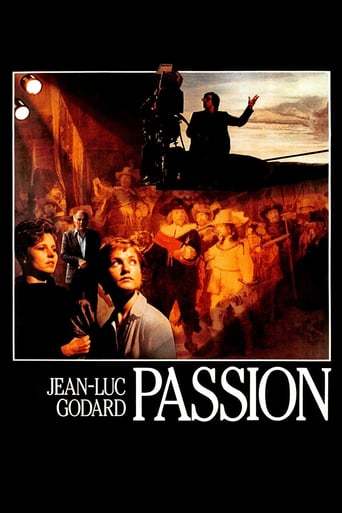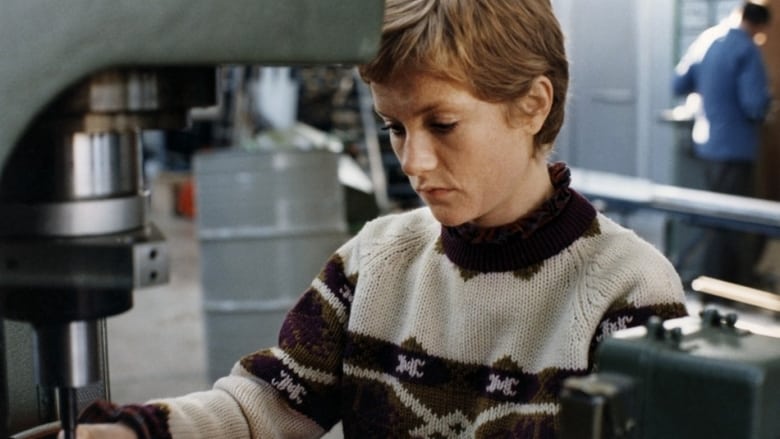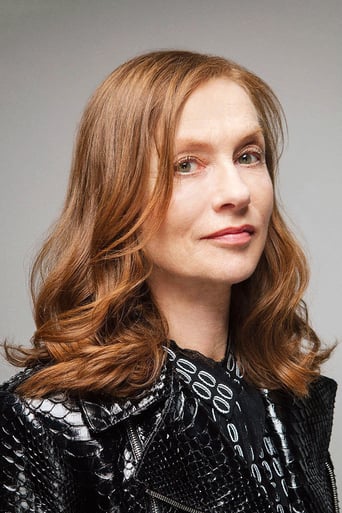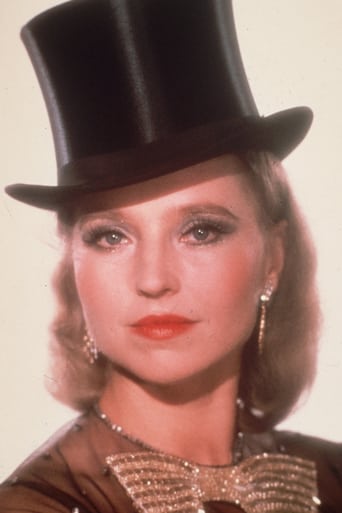

Godard's Passion (1982)
While shooting a film, the director becomes interested in the unfolding struggle of a young factory worker that has been laid off by a boss who did not like her union activities.
Watch Trailer
Cast


Reviews
Just so...so bad
It's hard to see any effort in the film. There's no comedy to speak of, no real drama and, worst of all.
Good films always raise compelling questions, whether the format is fiction or documentary fact.
Blistering performances.
My theory is this: you have to watch this film after midnight, after all the cares of the day are forgotten (the phone call you forgot to make, the stuff you didn't pick up at the store) and you can relax completely. Just let the scenes unspool before you, the beautiful images wash over you. Godard has made a kind of masterpiece, under trying circumstances--he wanted Vittorio Storaro as DP, and had to call in Coutard, with whom he was no longer friendly--and his efforts were not crowned with commercial success; the picture was a flop.Jerzy's character is fascinating; he seems to take inertia to new heights. Imagine refusing to shoot because the lighting is wrong. Fritz Lang (and Godard himself, of course) would never have used that silly excuse: they would have worked around any problems on the set. Miss Lucachevski, the tall and very elegant script-girl, says that she is tired of working on a production that produces nothing and we can feel her frustration. Jerzy asks her to read a passage from Les Miserables about Enjolras's passion, then he makes the bloodless remark about bloodless times I've used in the summary. Radziwilowicz is a pudding-faced actor who shows us little of what he's feeling. Hanna Schygulla on the other hand is extraordinarily animated and focused as the uneasy female angle of the triangle with Michel and Jerzy. She is photographed better here than Fassbinder managed to shoot her in his films. MacCabe's book on Godard tells how she came to work one day after a night of excess and Godard insisted on shooting her with every wrinkle lovingly recorded. Whatever, she is gorgeous, every bit as striking as Anna Karina, or even Jane Fonda, to name two of Godard's leading ladies.The enactments of the paintings are ravishing, worth the price of the video in themselves. Myriem Roussel posing on the pool deck for the Ingres Bather is stunning, the entry of the crusaders into Jerusalem will delight you. A knockout.
Have you ever watched a movie and been aware of how much your emotions are being manipulated? Your buttons being pushed?Just before I watched this film, I'd seen neuroscientist Susan Greenfield say how modern media encourages a sequence she calls arousal-addiction-reward. And stimulating that mental pathway releases dopamine, which inhibits the part of the brain associated evaluating social behaviour, planning complex cognitive behaviour, personality expression, and decision making. Most films are designed to produce emotional response. We are aroused (for instance) by the plight of the leading lady, addicted to the drama long enough to see what happens, and then suitably rewarded when she marries and lives happily ever after. Not only have we been told what to feel, but our critical thinking is subjugated into passive viewing. Unbiased appraisal of hypothetical outcomes is largely overridden by dominant subtexts. Critical thinking off: mainstream message on.Godard claims he makes films to invite audiences to think, not to feel. The complex concept and metaphor (rather than adrenalin-filled) stories, can at first seem boring. Lacking in formal narrative, they flop at the box office, yet go on to critical acclaim and canonical status. Passion examines this discrepancy between a film as a piece of art versus the demands of commercial cinema.Passion is a film within a film. Jerzy, a Polish filmmaker in western Europe, is re-creating tableaux vivants - masterpieces by Goya, Rembrandt, El Greco, Ingres and Delacroix. Tableaux vivants were a popular 19th century pre-cinema entertainment (described, for instance, in Sontag's novel, The Volcano Lover). Actors don't speak or move, and Jerzy is obsessing over light and shade while making up scenarios on the fly. His aesthetically ambitious film is two billion francs over budget. Money is needed. Meanwhile backers harangue Jerzy over his lack of storyline.The filmmakers occasionally go to a nearby hotel and factory to find extras. Jerzy seduces both the factory owner's wife and a worker, Isabelle (Isabelle Huppert), who has been laid off and wants her money. They are attracted to the artistic environment, finding an aesthetisized mirror of their daily life. Squabbles off-set seem to be echoed in set pieces (for instance, where a Crusader carries off a half-clad maiden). The idea is voiced that work and love share the same movements, underlined with typical Godardian 'food for thought' such as, "One has to work on loving or love working."With painting, image takes precedence over movement. The viewer supplies movement, or 'narrative,' by imagining a backstory or the painting's creation. With film, movement takes precedence over image. Brechtian techniques can be used to jolt audiences into awareness of stillness, or a concept contained in the film, allowing us to approach it from different angles much as we would a sculpture. Some techniques here used by Godard include extended L-cuts: we hear one woman talking but the camera is on another woman who is talking at the same speed, her voice muted (symbolically unheard). We watch an actress as she watches herself: on a video monitor, where she is struggling to lip-synch an operatic aria. That the film mirrors the film within the film, and also its own making, focuses our attention on the idea of what we are watching rather than the visual spectacle itself. Godard breaks down the barrier between documentary and fiction: "It's not a lie but, rather something imagined, not the exact truth, nor the opposite of truth. It's set apart from the real as it appears by the thoroughly calculated approximations of verisimilitude."In making his Passion (the word can be taken in all three senses), Godard, like Jerzy, experienced resistance from actors because action is organised around images rather than a script. He created scenarios on a day-to-day basis as the film was being shot. For non-Godard fans, Passion is less hard work than his most abstruse work, but still takes effort to figure out what is happening rather than dismiss it as meaningless self-indulgence (which on casual viewing would be very easy to do). Once that investment has been made, it contains not only considerable satire, but enough material to engender repeat viewing. Although there are some political overtones, they are more in the background than with his earlier work. The film can also be admired for sheer exquisiteness, attention to detail, and perfect lighting in its re-creation of famous paintings. Amidst the mayhem of the studio and the baring of the director's soul, the young woman dancing clumsily around with a robe falling off, the young girl told to lie naked in the pool as a star-shape, or the cherub with a pointing finger – all are transformed into images of utter beauty. Godard's rendering of Rembrandt's Nightwatch is uncanny to anyone familiar with the painting. Goya's Nude Maja closely resembles Godard's live copy. The characters in Godard's version of Ingres' Small Bather might be inexact, but a comparison draws attention to the perfectly reproduced luminescence of the woman's skin – an effect achieved by perfect lighting – lighting that makes the human image semi-divine. "An image is not powerful because it's brutal or eerie," muses Jerzy, "but because the solidarity between ideas is distant and just."Passion is an outpouring of the creative process, inspired, according to Godard, by Titan's Bacchus and Ariadne. Together with First Name Carmen and Slow Motion, it is is one of three films by Godard showing directors struggling with 'impossible' projects. I sometimes find Godard almost spoils me for conventional cinema. Like one of his characters, I find myself muttering, "Don't push my buttons! OK?"
This beautiful film takes me into my childhood fantasy world. The colours are beautiful, the dynamics is nocturnal, the people dance a ballet all the time, the sound has a life of its own... It's not just a motion picture, it's a motion painting. What a shame it hasn't been issued on DVD yet.
Cinema, just like other forms of art is an expression of feelings. That's what Art is all about! If I make a movie, first of all I am making it for myself. That's how I have felt. I wont force anyone to like my job. Some viewers establish communication, some dont. No Rebuke!




